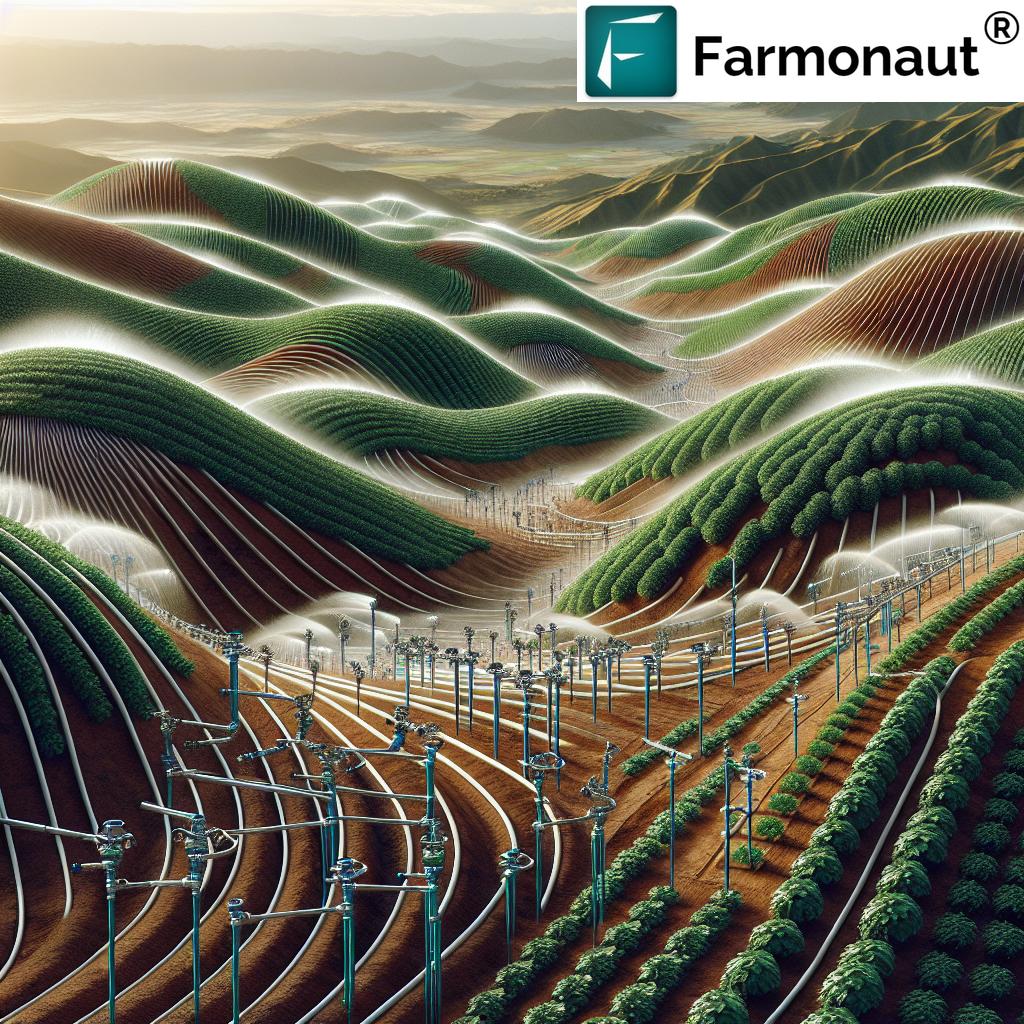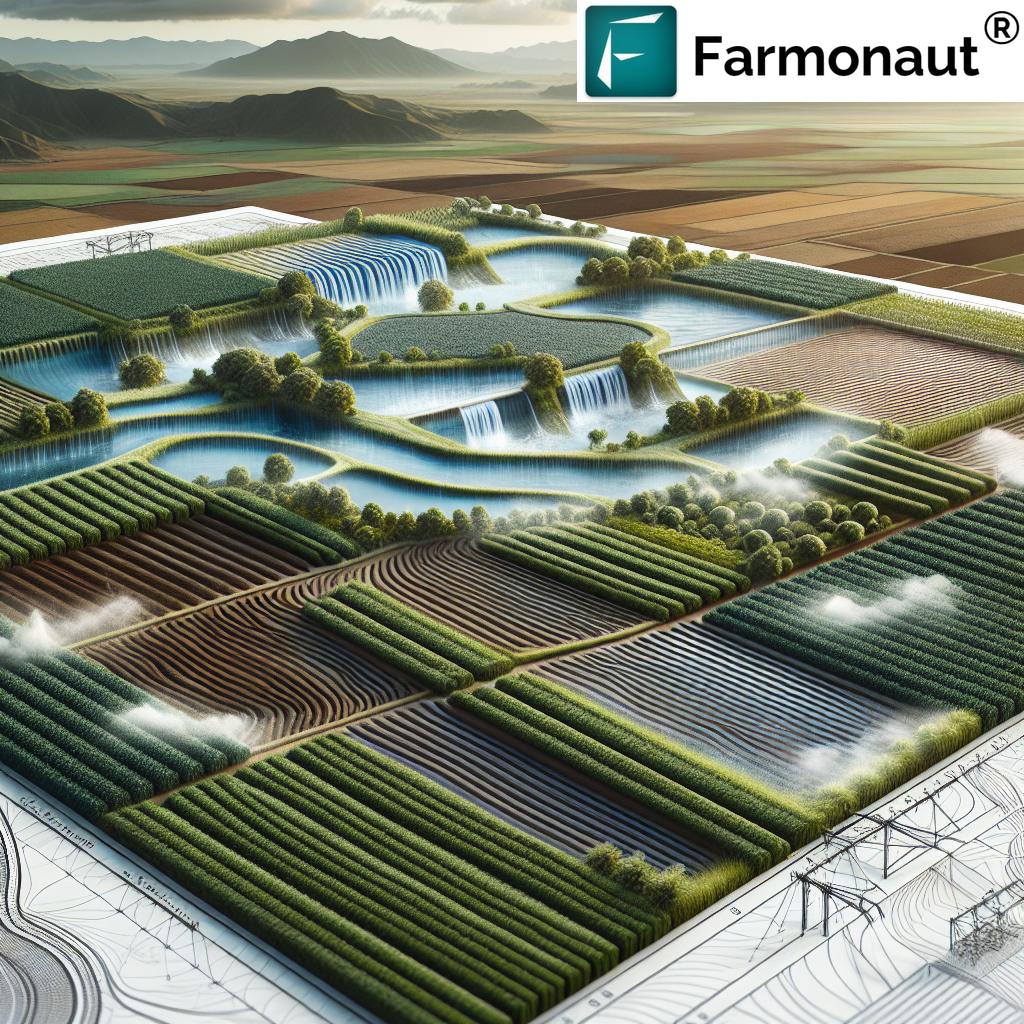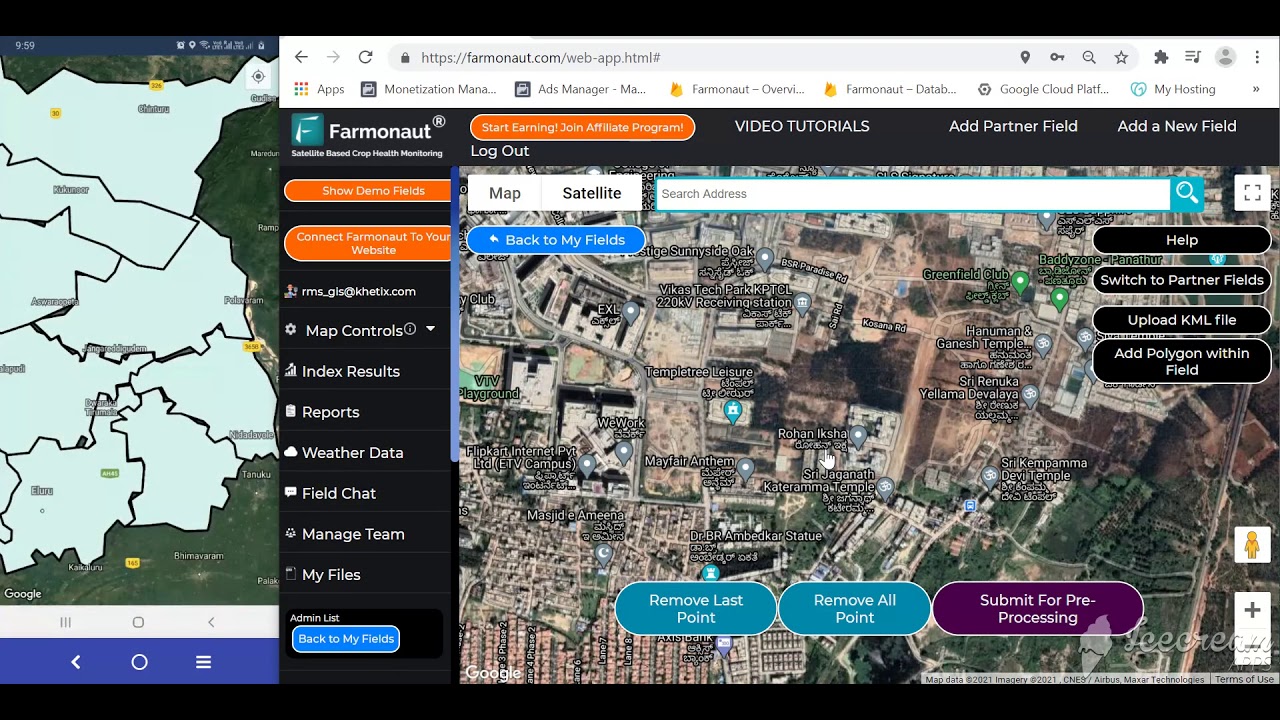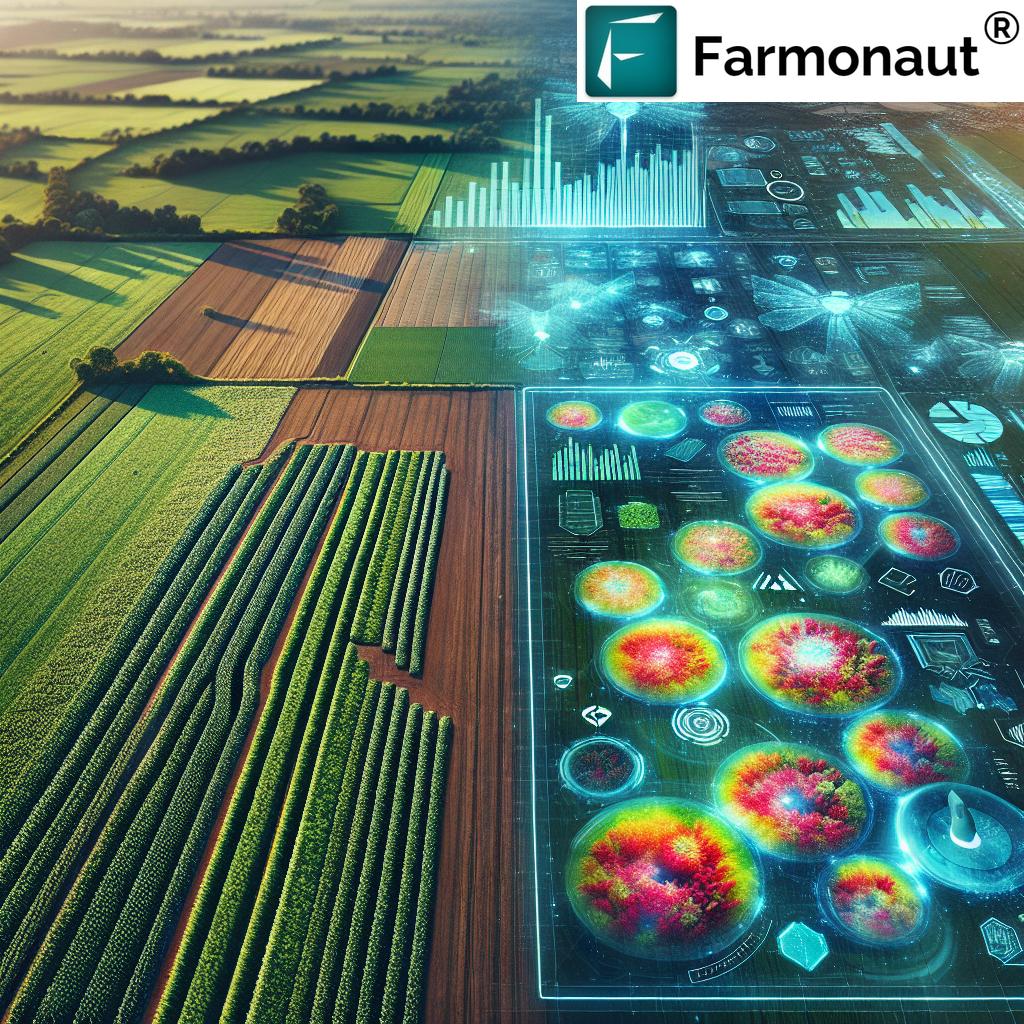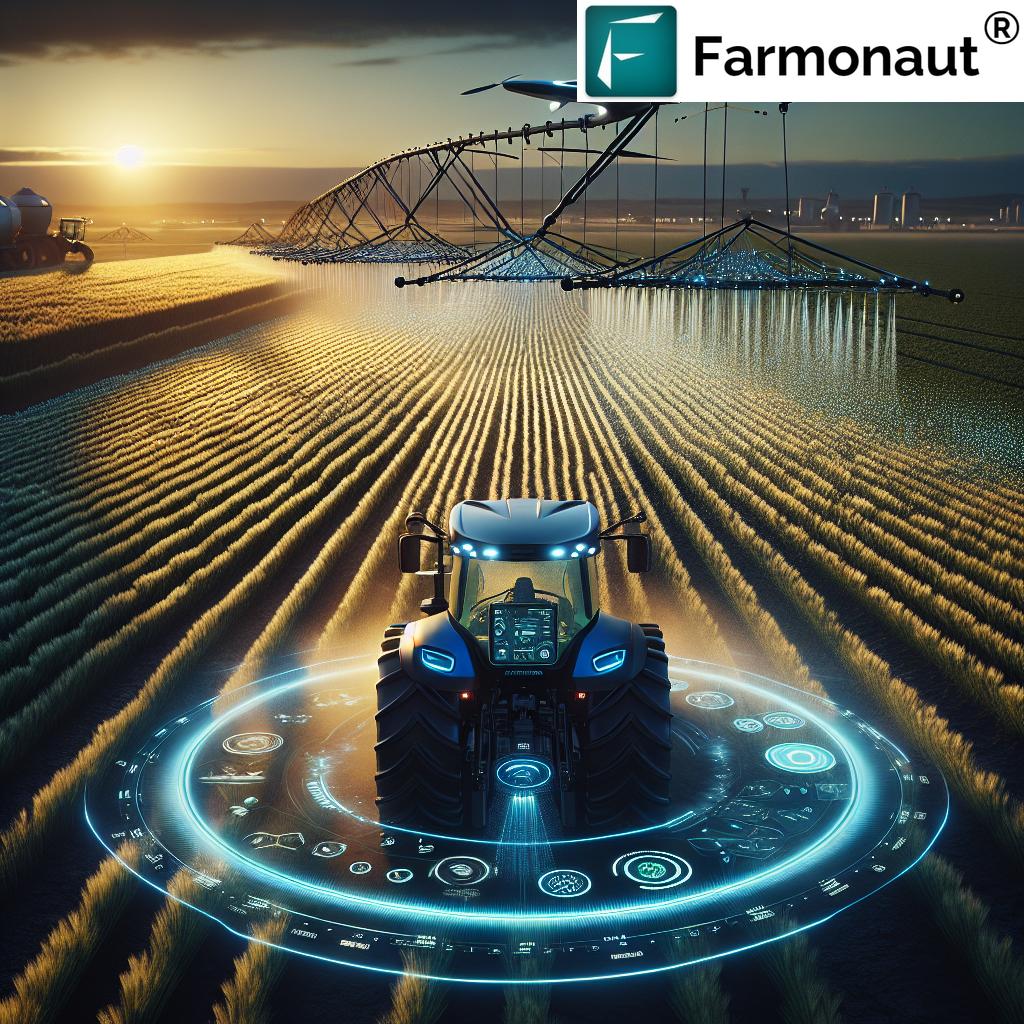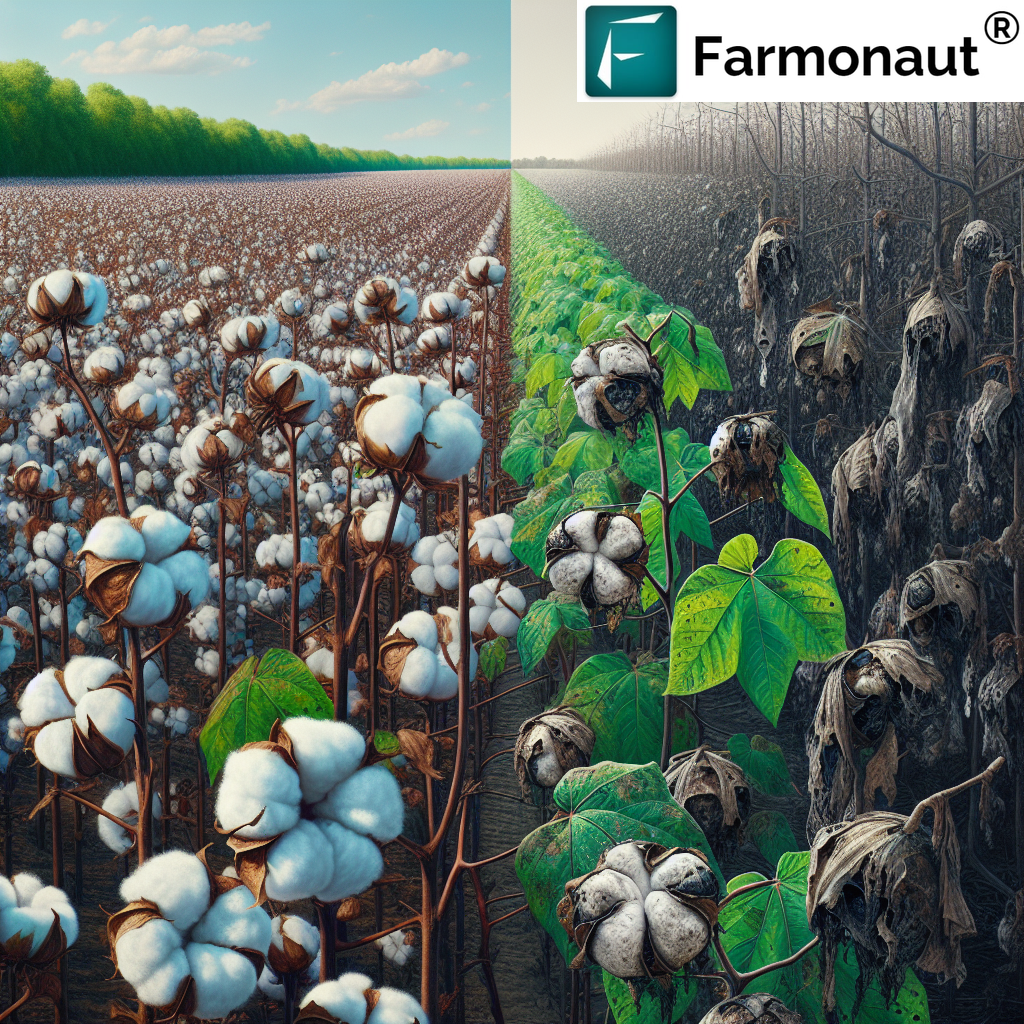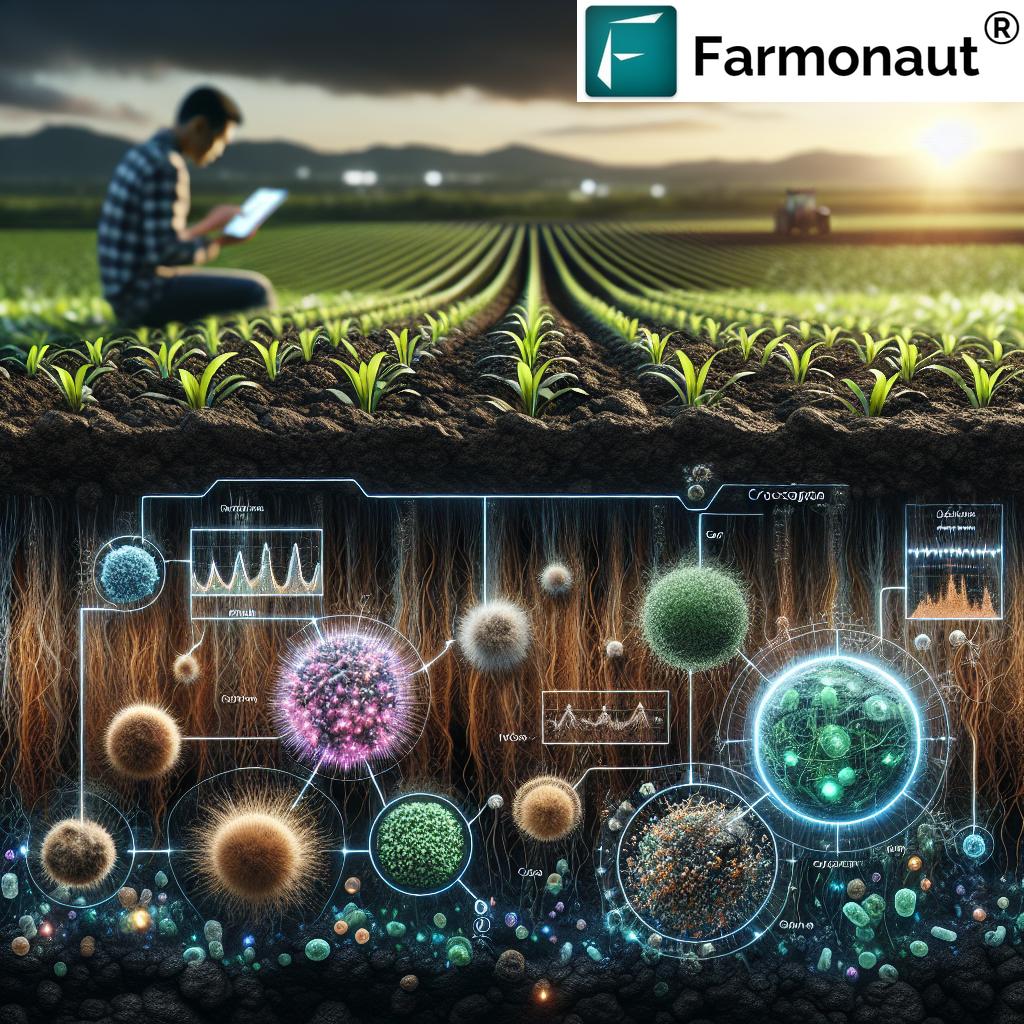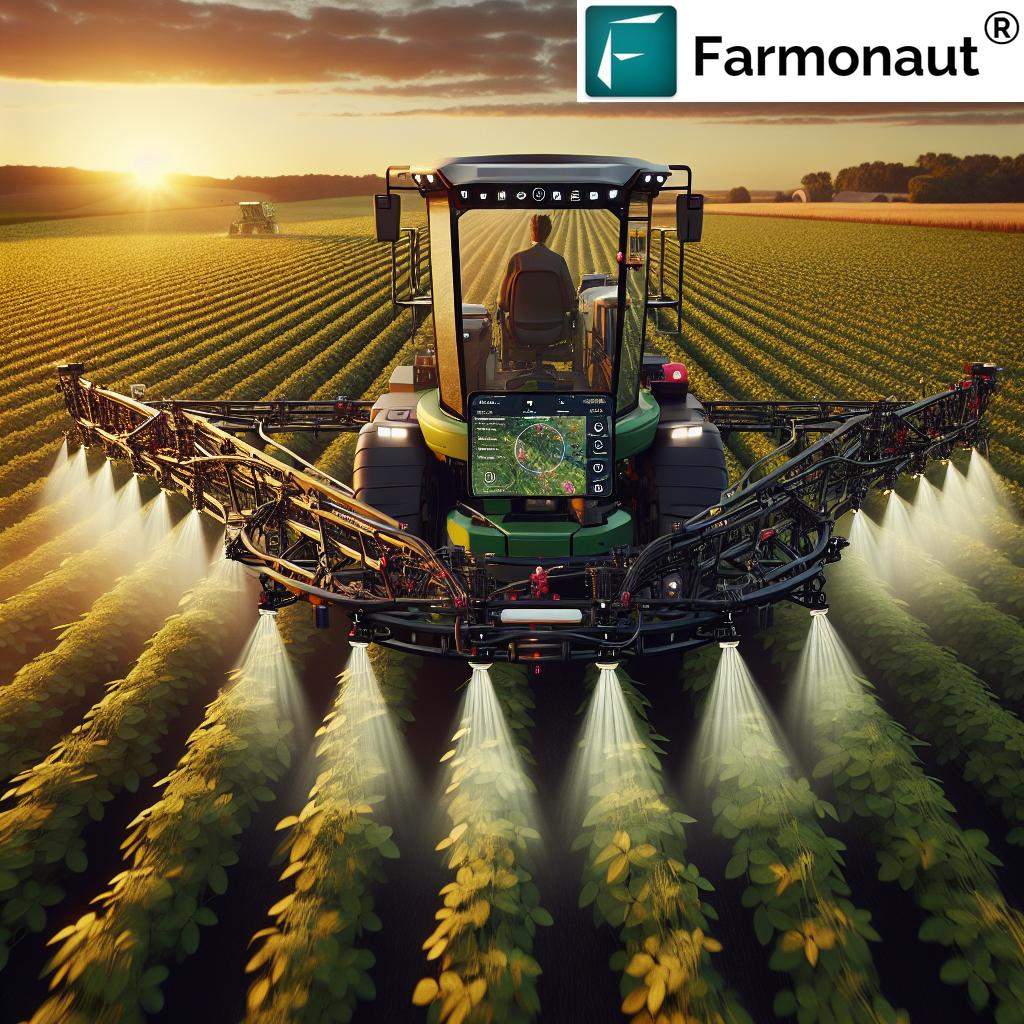Irrigation Systems for Varying Terrains: Top 5 Solutions
“Drip irrigation can reduce water usage by up to 60% on sloped terrains compared to traditional flood methods.”
“Sprinkler systems increase crop yields by 30% on uneven fields due to uniform water distribution.”
The Importance of Irrigation on Varying Terrains
Irrigation is a fundamental aspect of modern agriculture, ensuring crops receive adequate water for optimal growth and high yields. As we strive to feed growing populations and adapt to changing climates, our choice of irrigation system becomes crucial—especially when dealing with diverse land types like flat plains, undulating landscapes, or steep slopes.
Choosing the right irrigation system for uneven terrain is far more than a technical decision. It directly impacts water efficiency, resource conservation, labor input, production costs, and ultimately, crop yields. By selecting an appropriate method suited to the soil type, elevation, topography, and water availability of our fields, we lay the foundation for both sustainable and profitable agriculture.
Challenges in Implementing Irrigation Systems for Uneven Terrain
Before exploring the top irrigation systems for varying terrains, we must recognize the main challenges that make irrigation on uneven land particularly demanding:
- Water Distribution Inequality: On non-flat land, water tends to flow downhill, accumulating in lower areas and causing waterlogging while leaving higher areas dry. Ensuring uniform coverage is difficult without contour-based system design.
- Soil Erosion: Steep slopes accelerate water flow, increasing the risk of soil erosion and loss of nutrients, which can be detrimental to crop health and long-term fertility.
- Inconsistent Soil Moisture: Different soil types (such as sandy vs. clayey) may exist across a field, complicating irrigation scheduling and water management.
- Infrastructure Complexity: Installing and maintaining irrigation systems on challenging topography requires extra planning, specialized equipment, and often, higher costs.
- Water Source Accessibility: The location, availability, and reliability of water sources may limit the kinds of systems that are suitable for a given farm or region.
Understanding these challenges allows us to better appreciate why efficient irrigation methods for agriculture are essential—and which innovations address these unique obstacles.
Types of Irrigation Systems for Uneven Terrain: What Are Your Options?
To optimize water use and achieve uniformity in even the most difficult topography, farmers worldwide rely on a spectrum of irrigation systems, each with different strengths and weaknesses depending on soil type, slope, and elevation.
1. Surface Irrigation on Flat Land (Traditional Methods)
Surface irrigation—including flood, furrow, and basin methods—is the oldest form of agricultural irrigation. Water is applied directly to the soil surface via canals, channels, or furrows. It’s best suited to relatively flat or gently sloped fields, where water can flow evenly across the land.
- Most effective where water flow is unimpeded by contours or steep slopes.
- Challenges arise on uneven land due to water pooling in low areas (causing waterlogging) and insufficient irrigation of higher elevations.
- Not generally regarded as a highly water-saving irrigation technique, but can be optimized with leveling and controlled flow.
2. Sprinkler Irrigation for Various Terrains
Sprinkler irrigation systems simulate rainfall, distributing water across the field via rotating or fixed sprinkler heads. These systems are versatile and can be adjusted for different slopes, elevations, and crop types.
- Widely used due to their ability to deliver water uniformly, especially on uneven or gently sloping terrains.
- Sprinkler design can accommodate contours and irregular field shapes with proper planning.
- Concerns: Wind can disrupt water distribution on very steep or exposed fields; evaporation losses can be higher than with subsurface methods.
3. Drip Irrigation for Hilly Areas
Drip irrigation uses a network of tubes and emitters to deliver water directly to plant root zones, minimizing surface runoff and evaporation.
- Highly efficient, saving up to 60% of water on hilly terrains compared to surface irrigation.
- Can be installed along natural contours to match the land’s shape, ensuring uniform water distribution even on uneven fields.
- Ideal for areas with limited water availability and diverse soil types.
Focus Keyword: drip irrigation for hilly areas
4. Subsurface Irrigation: Hidden Efficiency
Subsurface irrigation involves placing irrigation lines below the soil surface to deliver water directly to root zones. This reduces evaporation losses and can be adapted to follow the contours of uneven fields.
- Uniform water distribution across a range of topographies.
- Lower risk of weeds and fungal diseases due to dry surface.
- Can be complex to install and requires effective maintenance to avoid clogging.
Focus Keyword: subsurface irrigation for uneven terrain
5. Innovative Techniques: Gravity, Fog Catchers, and Hydro-Ram Pumps
- Gravity-Fed Drip Irrigation: By leveraging elevated water sources, water moves naturally down the slope, requiring little to no pumping. It’s one of the best irrigation systems for different soils in mountainous regions.
- Hydro-Ram Pumps: These eco-friendly pumps utilize the energy of flowing water to lift a portion of it to higher elevations—crucial for remote or steep hilly areas where electric pumps may not be feasible.
- Fog Catchers: In arid, foggy regions, these structures capture and condense water droplets from the air, making a sustainable source for irrigation despite limited groundwater or rain.
Key Considerations: Optimizing Irrigation for Different Soils and Topographies
To maximize efficiency and crop yields with irrigation systems for uneven terrain, we must consider the following factors in our decision-making:
Soil Type
- Sandy soils: These drain quickly and require more frequent and precise irrigation. Drip or subsurface systems deliver water directly, reducing wastage.
- Clayey soils: Retain water for longer periods, so less frequent irrigation is required, but risk of waterlogging increases, especially in lower elevations.
- Loamy soils: Offer a balance—drain well yet retain moisture—making sprinkler and drip irrigation highly effective.
The best irrigation system for different soils adapts its delivery rate and schedule according to retention capacity.
Topography & Slope
- Flat land and plains: Permit most methods, with surface irrigation being cost-effective.
- Hilly and uneven fields: Drip, subsurface, and sprinkler systems work best, especially when installed along field contours to prevent runoff and erosion.
- Steep landscapes: Require contour-following networks and check dams to manage flow velocity and avoid soil loss.
Focus Keyword: topography-based irrigation design
Water Availability
- Abundant source: Surface or sprinkler irrigation systems can be feasible.
- Limited or unreliable water: Drip and gravity-fed systems offer unmatched efficiency—delivering water exactly where and when needed.
- Alternative sources (fog, condensation): Innovative fog catchers provide sustainable irrigation solutions in fog-dense but arid locations.
“Drip irrigation can reduce water usage by up to 60% on sloped terrains compared to traditional flood methods.”
“Sprinkler systems increase crop yields by 30% on uneven fields due to uniform water distribution.”
Top 5 Irrigation Systems for Uneven Terrain
Now, let’s examine in detail the top 5 water-saving irrigation techniques for fields with challenging contours, soil types, and elevations—the systems that are transforming modern agriculture worldwide.
1. Surface Irrigation on Flat Land
Surface irrigation remains the go-to for flat or gently sloping areas. It is simple to install, cost-effective, and requires minimal technical expertise.
- Best suited for crops like rice, wheat, and other cereals planted on well-leveled plains.
- Works by distributing water via channels or furrows, ideal when land topography allows for even flow.
- Key Limitation: Not recommended for steep or highly uneven fields; prone to water wastage and uneven plant growth.
Focus Keyword: surface irrigation on flat land
2. Sprinkler Irrigation Systems for Various Terrains
Sprinkler irrigation is widely used for orchards, vegetables, and high-value crops in diverse terrains. Its ability to deliver uniform coverage makes it a strong candidate for irregular, undulating, or moderately sloped fields.
- Reduces manual labor by automating watering schedules.
- Can increase crop yields by over 30% on uneven fields compared to manual or traditional methods.
- Portable options allow flexibility where wind or obstacles can affect distribution uniformity.
Focus Keyword: sprinkler irrigation for various terrains
3. Drip Irrigation for Hilly Areas
Drip irrigation stands out as the most efficient system for water-saving and yield improvement on uneven, sloped, or terraced lands. By delivering water directly to plant roots, it prevents nutrient leaching and evaporation.
- Saves water (up to 60%) and delivers nutrients precisely.
- Suitable for vineyards, orchards, vegetables, and other cash crops on hilly areas.
- Reduces weed growth and disease, promoting healthier crops.
Focus Keyword: efficient irrigation systems for uneven terrain
4. Gravity-Fed Drip Irrigation
Perfect for regions where electric or diesel pumping is unfeasible or expensive, gravity-fed drip systems utilize elevation to create pressure and move water naturally from source to plant.
- No need for fuel, pumps, or complex machinery—lowering costs and simplifying maintenance.
- Ideal for smallholder farms, mountain regions, and community-managed infrastructure.
- Significantly reduces soil erosion compared to surface flooding.
Focus Keyword: gravity-fed drip irrigation
5. Subsurface Irrigation for Challenging Terrain
Subsurface irrigation systems place water-delivery lines below the soil, maintaining a moist root zone while leaving the surface dry.
- Ideal for areas with limited water supply or where evaporation rates are high.
- Requires precise installation and professional design to follow contours and prevent localized pooling or dry spots.
- Long-term savings outweigh higher initial investment due to reduced labor and water use.
Focus Keyword: innovative irrigation techniques for challenging terrains
Comparison Table: Best Irrigation System for Different Soils, Slopes, and Terrains
| Irrigation System Name | Suitable Terrain Type | Estimated Water Savings (%) | Initial Setup Cost (USD/acre) | Maintenance Complexity | Adaptability to Soil Types | Estimated Yield Improvement (%) |
|---|---|---|---|---|---|---|
| Surface Irrigation | Flat, low-slope fields | 10–20 | $200–$500 | Low | Medium | 5–10 |
| Sprinkler Irrigation | Uneven, sloped, or regular fields | 30–40 | $850–$1,400 | Medium | High | 20–35 |
| Drip Irrigation | Hilly, undulating, or contoured land | 50–60 | $1,200–$2,000 | Medium | Very High | 35–40 |
| Subsurface Irrigation | Varied topography, both flat and uneven | 45–55 | $1,800–$3,000 | High | Very High | 30–38 |
| Gravity-Fed Drip Irrigation | Mountainous and sloped regions | 45–65 | $600–$1,100 | Low | High | 28–36 |
Integrating irrigation with satellite-based large scale farm management platforms helps monitor soil moisture and crop health in real-time. With Farmonaut’s advanced crop monitoring, users gain actionable insights to optimize irrigation schedules and reduce input costs.
Farmonaut: Satellite-Based Farm Management for Precision Irrigation
As the need to reduce costs, conserve water, and boost yields grows more urgent, technology-driven tools like Farmonaut offer a powerful solution. By providing advanced satellite-based farm management via web, Android, and iOS interfaces, Farmonaut empowers farmers, agribusinesses, and governments to make informed irrigation decisions based on:
- Real-time crop health monitoring (NDVI, EVI, Soil Moisture, LAI, Chlorophyll maps)
- Objective soil moisture tracking—allowing precision in irrigation timing and methods
- AI-based personalized advisory (Jeevn AI) on sustainable irrigation solutions, optimal irrigation scheduling, and disease/pest risk prediction
- Resource, fleet, and carbon footprint management (Fleet Management | Carbon Footprinting)
- Blockchain-based traceability of crops and supply chains (Traceability Solution), increasing transparency and trust.
-
Flexible subscription options and third-party API integration
(Farmonaut API |
Developer Docs)
By integrating these innovative technologies, Farmonaut enables better decision-making for water management, optimal irrigation system design, and sustainable farming practices that are both ecologically and economically sound.
Best Practices for Implementing Sustainable Irrigation Solutions
- Site Assessment: Conduct comprehensive analysis of your soil type, topography, water source, and microclimate before selecting an irrigation system. Utilize satellite-based monitoring tools for data-driven assessment.
- Custom System Design: Design irrigation networks to follow contours and manage natural water flow, ensuring uniform distribution even in uneven fields.
- Water-Saving Techniques: Schedule irrigation during low heat periods (morning or evening). Use soil moisture sensors and precision technology to avoid over-irrigation.
- Regular Maintenance: Inspect pipes, pumps, and emitters for leaks, blockages, or breaks. Proactive maintenance lowers disruptions and maximizes system longevity.
- Monitor Results: Track changes in yield, water usage, and soil moisture with Farmonaut’s crop monitoring features. Adjust system design and schedules as needed for continuous improvement.
- Educate & Upskill Staff: Training teams and workers in the use and troubleshooting of new irrigation technologies supports long-term success.
Did You Know? Crop loan and insurance verification can now be streamlined with satellite-based monitoring, reducing paperwork and expediting approvals—crucial for farms investing in new irrigation systems.
Frequently Asked Questions (FAQ)
What is the best irrigation system for uneven terrain?
For uneven or hilly areas, drip irrigation and gravity-fed drip are widely considered best due to their ability to follow land contours, deliver precise water quantities, and minimize runoff and erosion. Sprinkler systems may also be effective depending on wind intensity and terrain specifics.
How does soil type influence the choice of irrigation system?
Sandy soils drain quickly and benefit from systems delivering frequent, targeted water (like drip or subsurface). Clayey soils retain water longer, requiring less frequent but carefully controlled irrigation. Always choose a method adaptable to your field’s retention characteristics.
Can I use sprinkler irrigation in very steep areas?
While sprinkler irrigation can be adjusted for slopes, very steep or wind-exposed areas may experience uneven coverage and inefficiency. In such fields, drip or gravity-fed irrigation is usually preferred.
Are innovative systems like hydro-ram pumps and fog catchers practical for small farms?
Yes, in regions with clean flowing water sources or ocean/fog influence, both hydro-ram pumps and fog catchers offer low-maintenance and sustainable options for small and remote farms, though their effectiveness depends on regional environmental conditions.
How can technology like Farmonaut improve irrigation efficiency?
Farmonaut’s platform uses satellite imagery, AI, and weather analytics to track soil moisture, plant health, and resource usage in real time. This means you can schedule irrigation more accurately, respond to stress or disease earlier, and enhance your yield and sustainability.
Conclusion: Choose the Right Irrigation System for Your Terrain
Selecting the right irrigation system for your field’s unique topography, soil type, and water availability is a vital decision in modern agriculture. As we’ve seen, solutions like drip, gravity-fed drip, sprinkler, and subsurface irrigation offer powerful ways to enhance efficiency, reduce costs, and improve crop yields—while innovative methods such as hydro-ram pumps and fog catchers make sustainable farming possible in even the most challenging landscapes.
By combining the latest data-driven farm management technology with smart irrigation design and best practices, we can safeguard water resources, boost productivity, and ensure a more resilient agricultural future.
Ready to revolutionize your farm? Download Farmonaut’s app and gain access to all the data and advice you need to optimize your irrigation and resource use.
Farmonaut Subscriptions: Make Precision Farming Affordable
Access Farmonaut’s full suite of features—including real-time crop monitoring, personalized AI advice, and robust farm management tools—by choosing a subscription plan that fits your scale and needs.


